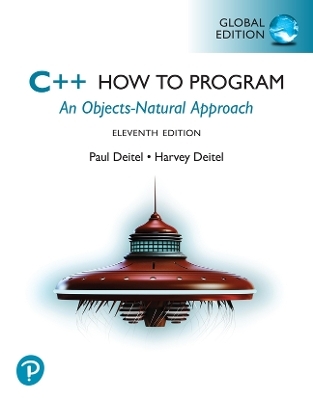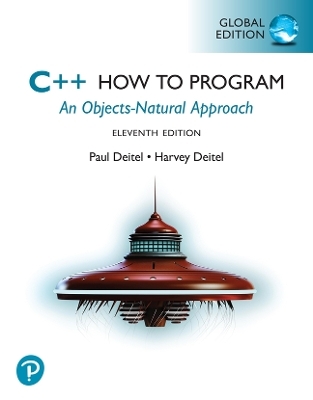
VHDL for Logic Synthesis – 3e
John Wiley & Sons Inc (Hersteller)
978-1-119-99585-2 (ISBN)
- Keine Verlagsinformationen verfügbar
- Artikel merken
Features to this edition include: * a common VHDL subset which will work across a range of different synthesis systems, targeting a very wide range of technologies * a design style that results in long design lifetimes, maximum design reuse and easy technology retargeting * a new chapter on a large scale design example based on a digital filter from design objective and design process, to testing strategy and test benches * a chapter on writing test benches, with everything needed to implement a test-based design strategy * extensive coverage of data path design, including integer, fixed-point and floating-point arithmetic, logic circuits, shifters, tristate buses, RAMs, ROMs, state machines, and decoders Focused specifically on logic synthesis, this book is for professional hardware engineers using VHDL for logic synthesis, and digital systems designers new to VHDL but familiar with digital systems. It offers all the knowledge and tools needed to use VHDL for logic synthesis.
Organised in themed chapters and with a comprehensive index, this complete reference will also benefit postgraduate students following courses on microelectronics or VLSI/ semiconductors and digital design.
Andrew Rushton, TransEDA Ltd., Southampton, UK Dr Rushton previously worked as an industrial hardware engineer at TransEDA Ltd., the leader in Verification Closure Measurement solutions for electronic designs. He now runs his own website design and programming consultancy company, www.andyrushton.co.uk.
Preface. List of Figures. List of Tables. 1 Introduction. 1.1 The VHDL Design Cycle. 1.2 The Origins of VHDL. 1.3 The Standardisation Process. 1.4 Unification of VHDL Standards. 1.5 Portability. 2 Register-Transfer Level Design. 2.1 The RTL Design Stages. 2.2 Example Circuit. 2.3 Identify the Data Operations. 2.4 Determine the Data Precision. 2.5 Choose Resources to Provide. 2.6 Allocate Operations to Resources. 2.7 Design the Controller. 2.8 Design the Reset Mechanism. 2.9 VHDL Description of the RTL Design. 2.10 Synthesis Results. 3 Combinational Logic. 3.1 Design Units. 3.2 Entities and Architectures. 3.3 Simulation Model. 3.4 Synthesis Templates. 3.5 Signals and Ports. 3.6 Initial Values. 3.7 Simple Signal Assignments. 3.8 Conditional Signal Assignments. 3.9 Selected Signal Assignment. 3.10 Worked Example. 4 Basic Types. 4.1 Synthesisable Types. 4.2 Standard Types. 4.3 Standard Operators. 4.4 Type Bit. 4.5 Type Boolean. 4.6 Integer Types. 4.7 Enumeration Types. 4.8 Multi-Valued Logic Types. 4.9 Records. 4.10 Arrays. 4.11 Aggregates, Strings and Bit-Strings. 4.12 Attributes. 4.13 More on Selected Signal Assignments. 5 Operators. 5.1 The Standard Operators. 5.2 Operator Precedence. 5.3 Boolean Operators. 5.4 Comparison Operators. 5.5 Shifting Operators. 5.6 Arithmetic Operators. 5.7 Concatenation Operator. 6 Synthesis Types. 6.1 Synthesis Type System. 6.2 Making the Packages Visible. 6.3 Logic Types - Std-Logic-1164. 6.4 Numeric Types - Numeric-Std. 6.5 Fixed-Point Types - Fixed-Pkg. 6.6 Floating-Point Types - Float-Pkg. 6.7 Type Conversions. 6.8 Constant Values. 6.9 Mixing Types in Expressions. 6.10 Top-Level Interface. 7 Std-Logic-Arith. 7.1 The Std-Logic-Arith Package. 7.2 Contents of Std-Logic-Arith. 7.3 Type Conversions. 7.4 Constant Values. 7.5 Mixing Types in Expressions. 8 Sequential VHDL. 8.1 Processes. 8.2 Signal Assignments. 8.3 Variables. 8.4 If Statements. 8.5 Case Statements. 8.6 Latch Inference. 8.7 Loops. 8.8 Worked Example. 9 Registers. 9.1 Basic D-Type Register. 9.2 Simulation Model. 9.3 Synthesis Model. 9.4 Register Templates. 9.5 Register Types. 9.6 Clock Types. 9.7 Clock Gating. 9.8 Data Gating. 9.9 Asynchronous Reset. 9.10 Synchronous Reset. 9.11 Registered Variables. 9.12 Initial Values. 10 Hierarchy. 10.1 The Role of Components. 10.2 Indirect Binding. 10.3 Direct Binding. 10.4 Component Packages. 10.5 Parameterised Components. 10.6 Generate Statements. 10.7 Worked Examples. 11 Subprograms. 11.1 The Role of Subprograms. 11.2 Functions. 11.3 Operators. 11.4 Type Conversions. 11.5 Procedures. 11.6 Declaring Subprograms. 11.7 Worked Example. 12 Special Structures. 12.1 Tristates. 12.2 Finite State Machines. 12.3 RAMs and Register Banks. 12.4 Decoders and ROMs. 13 Test Benches. 13.1 Test Benches. 13.2 Combinational Test Bench. 13.3 Verifying Responses. 13.4 Clocks and Resets. 13.5 Other Standard Types. 13.6 Don't Care Outputs. 13.7 Printing Response Values. 13.8 Using TextIO to Read Data Files. 13.9 Reading Standard Types. 13.10 TextIO Error Handling. 13.11 TextIO for Synthesis Types. 13.12 TextIO for User-Defined Types. 13.13 Worked Example. 14 Libraries. 14.1 The Library. 14.2 Library Names. 14.3 Library Work. 14.4 Standard Libraries. 14.5 Organising Your Files. 14.6 Incremental Compilation. 15 Case Study. 15.1 Specification. 15.2 System-Level Design. 15.3 RTL Design. 15.4 Trial Synthesis. 15.5 Testing the Design. 15.6 Floating-Point Version. 15.7 Final Synthesis. 15.8 Generic Version. 15.9 Conclusions. Appendix A Package Listings. A.1 Package Standard. A.2 Package Standard-Additions. A.3 Package Std-Logic-1164. A.4 Package Std-Logic-1164-Additions. A.5 Package Numeric-Std. A.6 Package Numeric-Std-Additions. A.7 Package Fixed-Float-Types. A.8 Package Fixed-Pkg. A.9 Package Float-Pkg. A.10 Package TextIO. A.11 Package Standard-Textio-Additions. A.12 Package Std-Logic-Arith. A.13 Package Math-Real. Appendix B Syntax Reference. B.1 Keywords. B.2 Design Units. B.3 Concurrent Statements. B.4 Sequential Statements. B.5 Expressions. B.6 Declarations. References. Index.
| Verlagsort | New York |
|---|---|
| Sprache | englisch |
| Maße | 168 x 244 mm |
| Gewicht | 666 g |
| Themenwelt | Mathematik / Informatik ► Informatik ► Programmiersprachen / -werkzeuge |
| Technik ► Elektrotechnik / Energietechnik | |
| ISBN-10 | 1-119-99585-X / 111999585X |
| ISBN-13 | 978-1-119-99585-2 / 9781119995852 |
| Zustand | Neuware |
| Haben Sie eine Frage zum Produkt? |
aus dem Bereich

